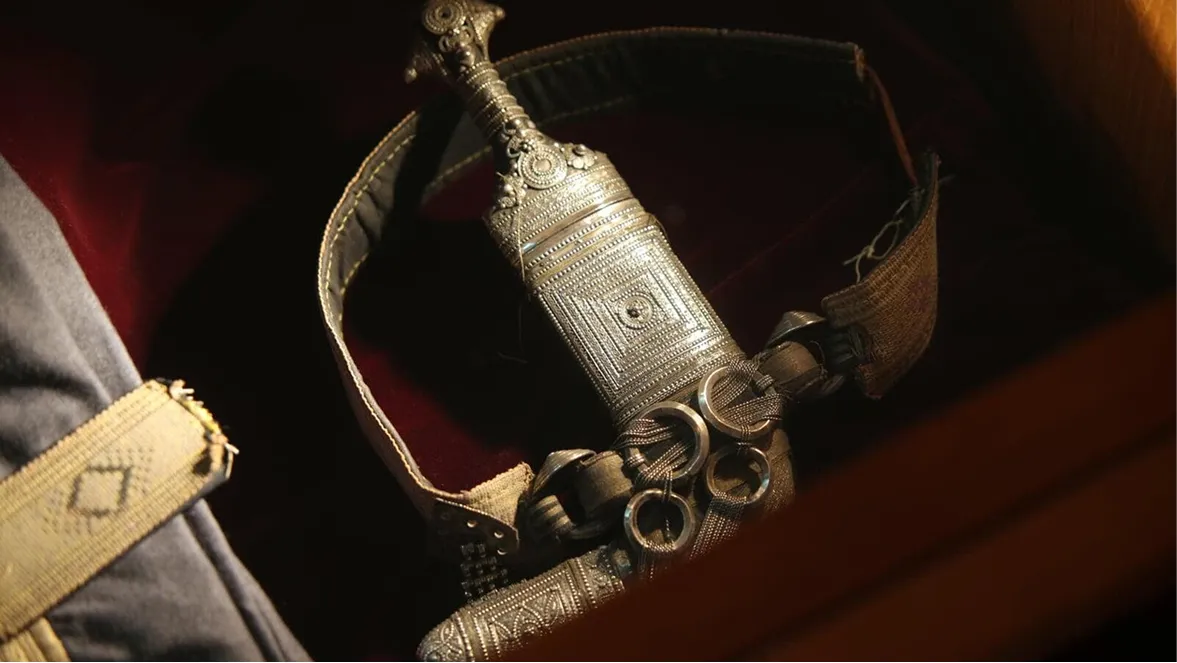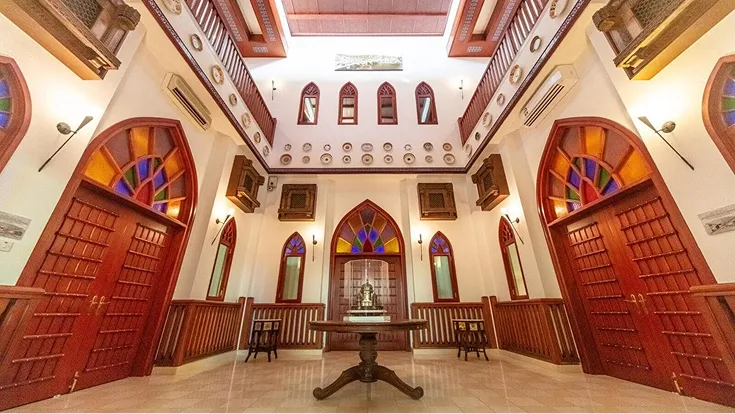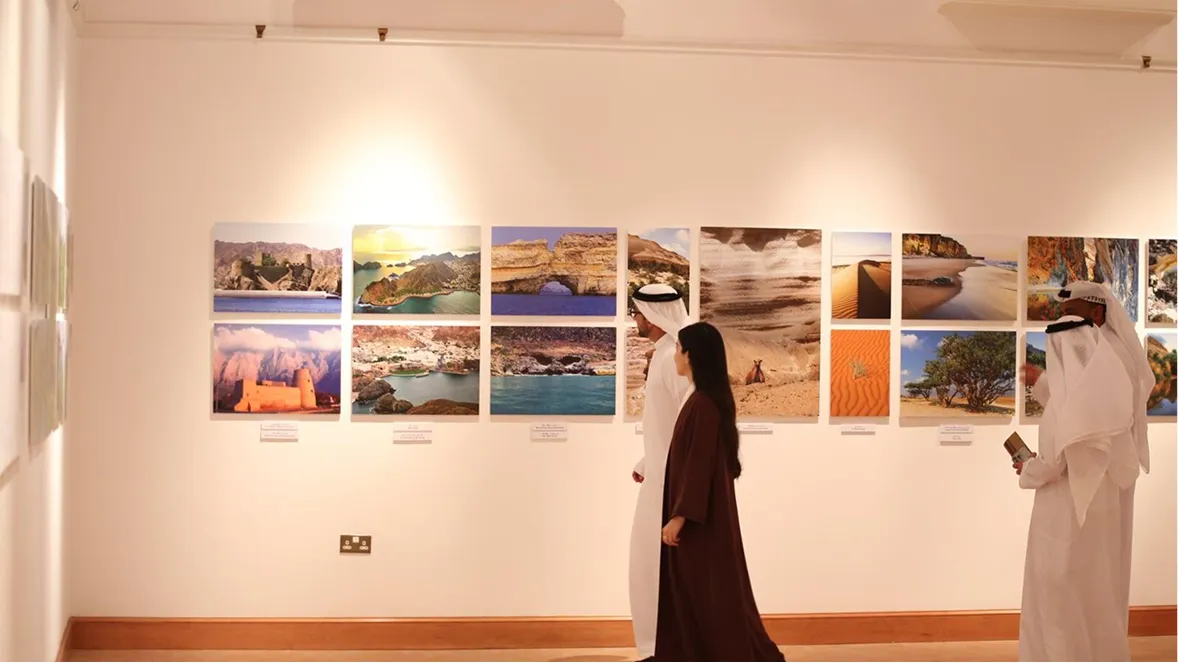
It all began as a home. Sheikh Al Zubair bin Ali – advisor to sultans and keeper of stories – built Bait Al Bagh in 1914. Today, pass beneath its stone arches and you’ll find more than history behind glass. On the ground floor, the essentials of Omani life: ceremonial khanjars with hilts of silver and horn, beaded wedding necklaces, embroidered men’s and women’s robes, 19th-century muskets, and a rare collection of manuscripts that crossed the seas centuries ago.
There’s a room for the Al Busaidi dynasty, Oman’s royal lineage, and a hall for the country’s most prized stamps and coins. The newly opened Architecture Hall pulls you forward, with scale models of ancient wind towers, falaj irrigation channels, and the ingenious mud-brick techniques that still inspire designers across the region.

Next door, Bait Al Oud is three stories of memory. On the first floor, antique European maps of Arabia jostle for space with traditional Muscati furniture – a carved wood chest, a mother-of-pearl inlaid chair. Upstairs, nostalgia sharpens: black-and-white photos show fishermen hauling nets on the Muttrah Corniche, now a playground for white yachts. A parade of rare vintage cameras traces Oman’s first encounters with photography. These black-and-white devices seem to eye visitors’ smartphones with the quiet confidence of elders who’ve seen it all before.
Life at Bait Al Zubair never sits still. Outside in the courtyard, the past is performed daily: one afternoon you’ll find a silversmith’s hammer dancing over molten metal, the next, poets blending classical Arabic meter with new rhythms under the arches. Inside Bait Al Nahdah, Oman’s artistic present gets equal billing: over fifty contemporary Omani artists are on show, and the ground-floor theatre buzzes with exhibitions, performances, and workshops that make the building as lively as any souk.

If you want to step deeper into yesterday, Bait Al Dalaleel is the place – a lovingly restored house that brings old Omani life into sharp focus. Sink into woven cushions in the majlis, peek at the date storeroom, and let the thick stone walls and soft lamplight conjure up stories you can almost hear being whispered late into the night. Next door, the art space and library are anything but dusty, packed with students and researchers trading ideas, surrounded by books and the promise of more discoveries.
Even the gardens carry the story: falaj channels coaxing jasmine and pomegranate into bloom, a miniature Omani village recalling a heritage built as much by hands as by kings. Zafran Café is close by, where strong cardamom coffee and honeyed date cake invite you to linger a little longer. As sunset stains the limestone gold, Bait Al Zubair quietly closes its doors – leaving you with the feeling of having stepped through a living manuscript, and the sense that its story is never quite finished.


.png)
.png)
.png)
.png)
